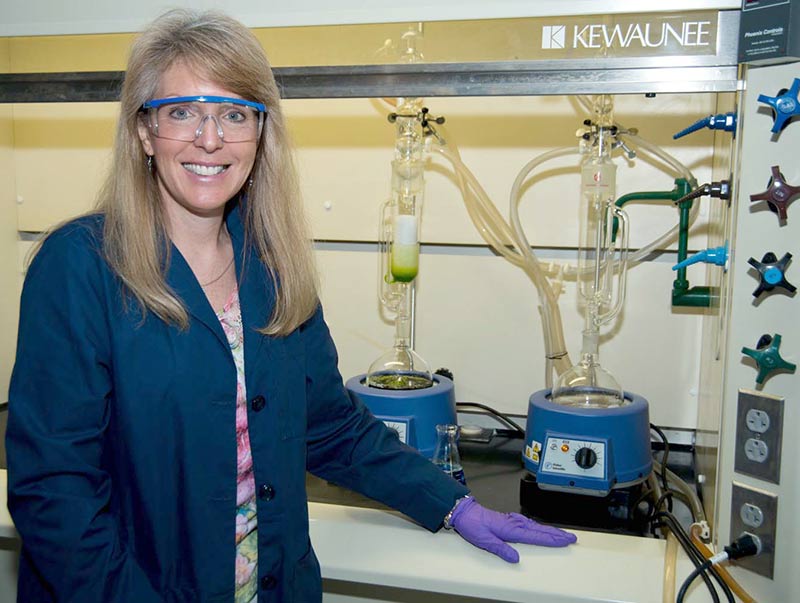Research Focus on Dr. Susan Richardson
Energy extraction and utilization practices, including conventional oil and gas, hydraulic fracturing, and coal-fired power plants produce large amounts of wastewater that contain high levels of bromide and iodide. Whether intentional or accidental, these wastewaters are often discharged to surface waters, leading to elevated bromide and iodide levels. At downstream drinking water treatment plants, these elevated halide levels lead to the formation of brominated and iodinated disinfection by-products (DBPs), which pose a greater risk to human health than their chlorinated analogues.
“In this multi-lab collaboration, our objectives are to investigate the toxicological impacts of elevated bromide and iodide levels resulting from these energy extraction and utilization processes on ecosystems and human health, identify and quantify brominated and iodinated DBPs formed, and estimate maximum bromide and iodide discharge levels to minimize human and ecological risks,” said Dr. Susan Richardson from the University of South Carolina.
“As part of this $330K NSF CBET grant, our lab is comprehensively characterizing and quantifying DBPs in waters impacted by coal-fired power plants and oil and gas wastewater. We collaborate with toxicologists who are working to assess the human health risks associated with DBPs formed in these waters, ecotoxicologists who study the impact of elevated bromide and iodide in surface waters on ecosystems, and engineers who will use modeling to estimate maximum loadings of halide discharge to protect human and environmental health.”
Project Title: NSF Collaborative Research: Impacts of Energy Extraction and Coal-Fired Power Plants on Disinfection By-Product Formation in Water. Click here to read the NSF Project Abstract.
Click download PDF of Research Focus on Dr. Susan Richardson
August 31, 2017